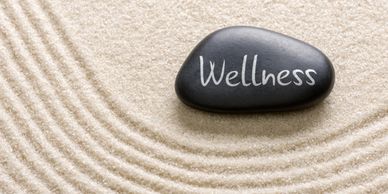Signed in as:
filler@godaddy.com
Signed in as:
filler@godaddy.com

When we hear the word “meditation,” we often picture a serene setting—a quiet room, soft lighting, perhaps the faint scent of incense in the air. But meditation doesn’t have to be confined to this traditional setup. In fact, it can be done almost anywhere, anytime, and often doesn’t require you to stop what you’re doing. This adaptability is one of the most powerful aspects of meditation, especially in a world where life moves quickly, and quiet moments can be hard to find.

Meditation doesn’t need to be an elaborate ritual. At its core, it’s simply about being present. Whether you’re out for a walk, sitting at the breakfast table while the kids prepare for school, or standing in line at the shop, meditation is accessible. In these everyday moments, meditation can be a grounding tool—a way to slow down, breathe, and center yourself amid the activity around you.

One of the easiest and most effective ways to begin meditating is to focus on your breath. By taking long, slow breaths, you naturally calm your nervous system. Try relaxing your shoulders, neck, arms, and fingers as you breathe deeply. With each exhale, let the tension drift away, as though you’re physically releasing it. You don’t need anything special—just your breath and a willingness to tune in.
As you breathe, everything around you may start to fade into the background. You might still hear the sounds of life—a car passing by, a kettle boiling—but by focusing on the breath, you create a small bubble of peace amid the bustle.

Some of the best meditation happens in the moments you least expect: a pause during a hectic morning, a calm breath before a big meeting, or a mindful step while out for a walk. These little pockets of stillness can have a profound effect on your mental well-being. Regularly practicing this type of meditation can help you better manage stress, stay present, and find clarity even in the busiest of times.
By making meditation flexible and fitting it into everyday life, you bring its benefits with you, no matter where you are. Remember, meditation isn’t always about escaping the world but about connecting to a sense of calm within yourself.

Welcome to this simple, beginner-friendly meditation. There’s no need for experience here—just an open mind and a few minutes to yourself.
Sit down in a comfortable chair or on the floor. You can even lie down if that feels best. The key is to find a position where you can relax without feeling tense or strained.
Close your eyes if it feels comfortable, or let your gaze soften on a spot in front of you. Take a long, deep breath in through your nose. Hold it for a moment, and then slowly release it through your mouth. Repeat this a few times, letting each breath be a bit slower and more relaxed.
Now, let your breathing settle into a natural rhythm. Place your attention on the sensation of each breath. Notice the cool air as it enters your nose and the warm air as it leaves. Don’t worry about breathing deeply or perfectly—just let each breath flow naturally.

I subscribe to Calm. I find its daily meditations are a great way to refocus on the day.
There are a few daily meditations.
Jeff Warren is great—his style is so approachable and down-to-earth.
Jay Shetty has such a calming and insightful approach to meditation.
Find a voice that resonates with you.
Tenacious